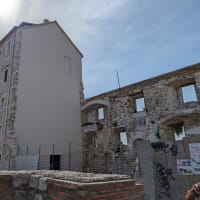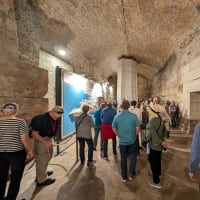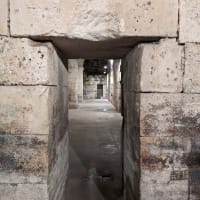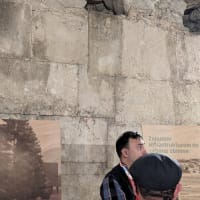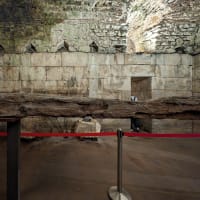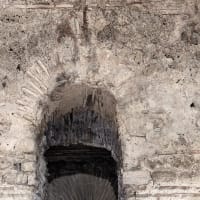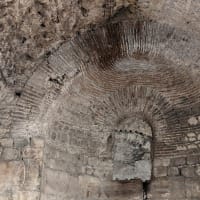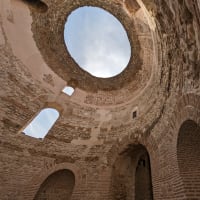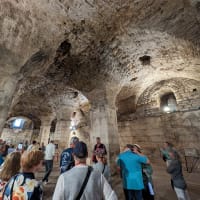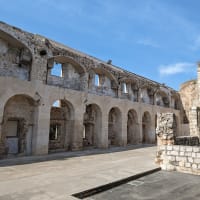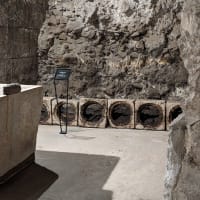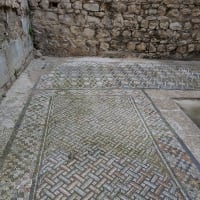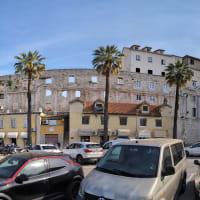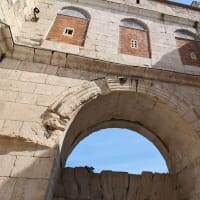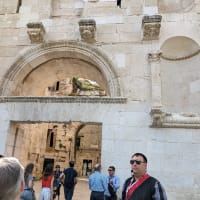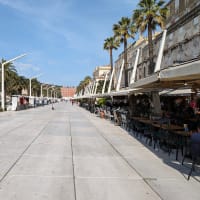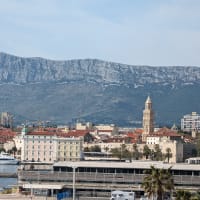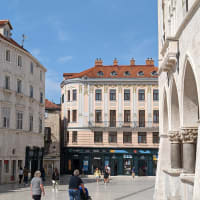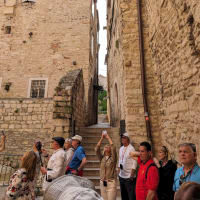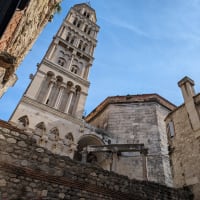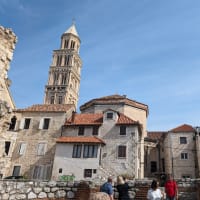Today’s excursion was “Split Walking Tour”:
See the Best of this Charming City – Because we are berthed close to the historic city center, you will stroll with your guide to the old quarter. Split is one of the oldest towns on the Adriatic, built around the 4th-century palace erected for Roman Emperor Diocletian as a retirement haven. What is left of his sprawling home has been seamlessly incorporated into modern Split. Explore the city center around the palace and make your way along its charming cobblestone streets, passing beautiful pre-Romanesque churches and Gothic chapels. In the palace complex, you will descend into the well-preserved cellars. Stop to admire the stunning bell tower at the Cathedral of St. Domnius, the patron saint of Split. At the end of the tour, you will return to your awaiting ship.
Like Dubrovnik, Split’s historical city center is surrounded by an old wall with a number of “gates” at points where people could enter and leave the city. With Split, it was particularly pointed out to us that the gates faced into an enclosed courtyard. Visitors would be allowed in, the outer gate was lower and cut them off. If they were friendly, the inner gate would open. If they were foe, arrows would hail out from windows on high.
Much of the excursion was spen exploring the cellars beneath Diocletian’s palace. The Romans were clearly very clever builders. Our guide pointed out one section of wall where the stones are L-shaped and explained that this stops the wall collapsing in the event of an earthquake - the shape stops the wall falling apart. The walls themselves used a Roman version of concrete, including ash from the Italian volcanoes and egg whites for binding.
There was another room where the shape of the ceiling meant that if you stood in the precise centre of the room, your voice was reflected by the ceiling and carried along corridors to adjacent rooms.
We were also shown concrete sections that were connected together to act as pipes for carrying water and sewage.
In one room we were shown a long section of wood which was used to stretch across a room to allow the building of the ceilings, and holes still exist in the walls where the wood was placed.
While exploring some of the outside parts of Split, the guide explained that none of the stone used by the Romans ever went to waste. It was often reused in newer walls or even as parts of a garden.
A fascinating city to visit and, like Dubrovnik, the rest of the city is full of narrow streets and mostly tourist-oriented shops including, for some reason, several selling plastic ducks even though there is no apparent connection between Split and ducks.
It was nice to be able to walk back to the ship afterwards as it meant we could spend as much time as we liked in the city … so long as we got back before the ship left!
